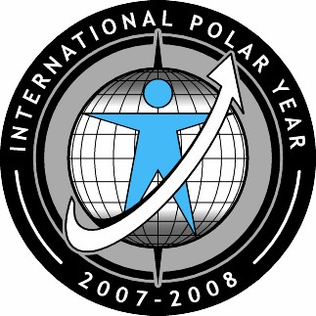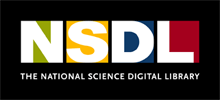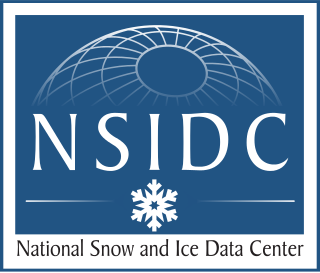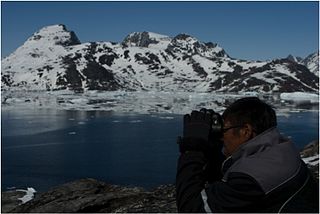
The International Polar Years (IPY) are collaborative, international efforts with intensive research focus on the polar regions. Karl Weyprecht, an Austro-Hungarian naval officer, motivated the endeavor in 1875, but died before it first occurred in 1882–1883. Fifty years later (1932–1933) a second IPY took place. The International Geophysical Year was inspired by the IPY and was organized 75 years after the first IPY (1957–58). The fourth, and most recent, IPY covered two full annual cycles from March 2007 to March 2009.

National Science Digital Library (NSDL) of the United States is an open-access online digital library and collaborative network of disciplinary and grade-level focused education providers operated by the Institute for the Study of Knowledge Management in Education. NSDL's mission is to provide quality digital learning collections to the science, technology, engineering, and mathematics (STEM) education community, both formal and informal, institutional and individual. NSDL's collections are refined by a network of STEM educational and disciplinary professionals. Their work is based on user data, disciplinary knowledge, and participation in the evolution of digital resources as major elements of effective STEM learning.

The University of Akureyri was founded in 1987 in the town of Akureyri in the northeastern part of Iceland. It is today a school of health sciences, humanities and social science, and a school of business and science. Over 2000 students attended the university in the autumn semester of 2014, around half of them through flexible learning, making the university the largest provider of distance education in the country. The University of Akureyri coordinates with other Icelandic Universities to operate the University Centre of the Westfjords located in Ísafjörður, which operates two master's degrees, one in Coastal and Marine Management and the other in Marine Innovation. Additionally, The University of Akureyri coordinates with other Nordic Universities for the West Nordic Studies and Polar Law Masters programs.
The National Oceanographic Data Center (NODC) was one of the national environmental data centers operated by the National Oceanic and Atmospheric Administration (NOAA) of the U.S. Department of Commerce. The main NODC facility was located in Silver Spring, Maryland, and was made up of five divisions. The NODC also had field offices collocated with major government or academic oceanographic laboratories in Stennis Space Center, MS; Miami, FL; La Jolla, San Diego, California; Seattle, WA; Austin, Texas; Charleston, South Carolina; Norfolk, Virginia; and Honolulu, Hawaii. In 2015, NODC was merged with the National Climatic Data Center and the National Geophysical Data Center into the National Centers for Environmental Information (NCEI).

The National Snow and Ice Data Center (NSIDC) is a United States information and referral center in support of polar and cryospheric research. NSIDC archives and distributes digital and analog snow and ice data and also maintains information about snow cover, avalanches, glaciers, ice sheets, freshwater ice, sea ice, ground ice, permafrost, atmospheric ice, paleoglaciology, and ice cores.
The University of the Arctic (UArctic) is an international cooperative network based in the Circumpolar Arctic region, consisting of universities, colleges, and other organizations with an interest in promoting education and research in the Arctic region.

Integrated Computer-Aided Manufacturing (ICAM) is a US Air Force program that develops tools, techniques, and processes to support manufacturing integration. It influenced the computer-integrated manufacturing (CIM) and computer-aided manufacturing (CAM) project efforts of many companies. The ICAM program was founded in 1976 and initiative managed by the US Air Force at Wright-Patterson as a part of their technology modernization efforts. The program initiated the development a series of standards for modeling and analysis in management and business improvement, called Integrated Definitions, short IDEFs.

The Global Learning and Observations to Benefit the Environment (GLOBE) Program is a worldwide hands-on, science and education program focusing on the environment, now active in over 120 countries worldwide. It works to promote the teaching and learning of science, enhance environmental literacy and stewardship, and promote scientific discovery. Students and teachers collect data and perform research in collaboration with scientists from numerous international agencies, and their work is made accessible through the GLOBE website.
The Barrow Area Information Database (BAID) is designed to support Arctic science with a special focus on the research hubs of Barrow, Atqasuk, and Ivotuk on the North Slope of Alaska.
Circumarctic Environmental Observatories Network (CEON) is a network of terrestrial and freshwater observation platforms, science experts and network partners promoting the collection and dissemination of environmental data from the Arctic. CEON observation platforms include land and freshwater observatories, research infrastructures, former research sites where retrospective analyses are being or can be undertaken, data and image archive centers and community monitoring programs.
Traditional ecological knowledge (TEK) describes indigenous and other traditional knowledge of local resources. As a field of study in Northern American anthropology, TEK refers to "a cumulative body of knowledge, belief, and practice, evolving by accumulation of TEK and handed down through generations through traditional songs, stories and beliefs. It is concerned with the relationship of living beings with their traditional groups and with their environment." Indigenous knowledge is not a universal concept among various societies, but is referred to a system of knowledge traditions or practices that are heavily dependent on "place". Such knowledge is used in natural resource management as a substitute for baseline environmental data in cases where there is little recorded scientific data, or may complement Western scientific methods of ecological management.
The Intellectual Property Issues in Cultural Heritage (IPinCH) Project is a seven-year international research initiative based at Simon Fraser University, in British Columbia, Canada. IPinCH's work explores the rights, values, and responsibilities of material culture, cultural knowledge, and the practice of heritage research. The project is directed by Dr. George P. Nicholas, co-developed with Julie Hollowell and Kelly Bannister and is funded by the Social Sciences and Humanities Research Council of Canada's (SSHRC) major collaborative research initiatives (MCRI) program.

Measurement of sea ice is important for safety of navigation and for monitoring the environment, particularly the climate. Sea ice extent interacts with large climate patterns such as the North Atlantic oscillation and Atlantic Multidecadal Oscillation, to name just two, and influences climate in the rest of the globe.
Hsinchun Chen is the Regents' Professor and Thomas R. Brown Chair of Management and Technology at the University of Arizona and the Director and founder of the Artificial Intelligence Lab. He also served as lead program director of the Smart and Connected Health program at the National Science Foundation from 2014 to 2015. He received a B.S. degree from National Chiao Tung University in Taiwan, an MBA from SUNY Buffalo and an M.S. and Ph.D. in Information Systems from New York University.

The Arctic policy of the United States is the foreign policy of the United States in regard to the Arctic region. In addition, the United States' domestic policy toward Alaska is part of its Arctic policy.
The Arctic Inspiration Prize is a $1 million CAD annual Canadian prize awarded to up to five diverse teams who have made a substantial, demonstrated and distinguished contribution to the gathering of Arctic knowledge and who have provided a concrete plan and commitment to implement their knowledge into real world application for the benefit of the Canadian Arctic and its Peoples. The Arctic Inspiration Prize defines the Canadian Arctic as the region including the Yukon, the Northwest Territories, the Inuvialuit Settlement Region, Nunavut, Nunavik and Nunatsiavut.

Participatory monitoring is the regular collection of measurements or other kinds of data (monitoring), usually of natural resources and biodiversity, undertaken by local residents of the monitored area, who rely on local natural resources and thus have more local knowledge of those resources. Those involved usually live in communities with considerable social cohesion, where they regularly cooperate on shared projects.
iDigBio, Integrated Digitized Biocollections, is the National Resource funded by the National Science Foundation (NSF) for Advancing Digitization of Biodiversity Collections (ADBC). Through iDigBio, data and images for millions of biological specimens are being curated, connected and made available in electronic format for the biological research community, government agencies, students, educators, and the general public.

Climate change and Indigenous peoples describes how climate change disproportionately impacts Indigenous peoples around the world when compared to non-indigenous peoples. These impacts are particularly felt in relation to health, environments, and communities. Some indigenous scholars of climate change argue that these disproportionately felt impacts are linked to ongoing forms of colonialism. Indigenous peoples found throughout the world have strategies and traditional knowledge to adapt to climate change. These knowledge systems can be beneficial for their own community's adaptation to climate change as expressions of self-determination as well as to non-Indigenous communities.
CircumArctic Rangifer Monitoring and Assessment Network (CARMA) is a scientific research network, launched in 2004 in Vancouver, British Columbia, and funded by the Canadian International Polar Year (IPY) which focusses on the health of health "the North's migratory tundra caribou and wild reindeer populations" in the face of global change, with up to 80% declines of some herds of wild Rangifer since 2004. The collaborative research is undertaken by an international team of scientists, administrators and members of local community members, particularly Rangifer hunters who share a common interest in their survival.










